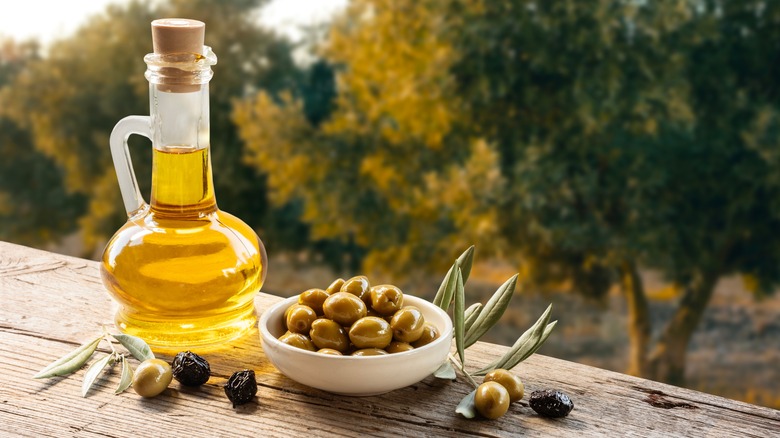Aioli Leaving A Bitter Taste In Your Mouth? Here's What You're Doing Wrong
If your homemade aioli tastes more bitter than bold, the culprit could be hiding in the very foundation of the recipe: the garlic. According to Chris Whitehair, owner of Flower City Flavor Company, "If garlic is exposed to air for too long or stored in humid conditions, it can oxidize or dehydrate unevenly." That means stale or poorly stored garlic can sabotage your aioli before you even start blending.
But even fresh garlic isn't safe if it's overworked. "Mashing garlic up too much also causes chemical reactions that lead to a bitter taste," Whitehair told The Takeout. Crushing, mashing, or processing garlic too aggressively kicks off that bitter chain reaction. While many aim for a silky texture, overprocessing can introduce harsh, sulfurous compounds.
Instead, Whitehair advises, "A fine mince is ok, don't go too far." Keeping things simple with a sharp knife helps preserve garlic's natural flavor without veering into harsh territory. Treated properly, garlic becomes the punchy backbone of aioli — bold and zesty, not bitter and overpowering. If your aioli's gone off the rails, it may be time to rethink how you're prepping your garlic.
Why olive oil isn't always the right choice
When it comes to making aioli, not all olive oils are created equal. Many home cooks assume that extra virgin olive oil is the gold standard, but that assumption may be what's ruining your batch. "Extra virgin olive oils contain higher concentrations of polyphenols," Whitehair said. "They are natural antioxidants ... but they give a bitter taste, so you have to be careful when using them."
So, too many polyphenols means a flavor profile that's more aggressive than aioli can handle — especially when you blend it too much. "Overprocessing olive oil accelerates the activation of polyphenol compounds, which in turn leads to bitterness," Whitehair says. Even a milder olive oil can develop a sharp edge if it's been whipped too hard.
To avoid that outcome, Whitehair has a clear preference. "If I were to use an oil, it would be avocado oil. It's a mild flavor, so it'll mix nicely with the rest of the ingredients." Avocado oil brings creamy body without overwhelming the other elements, offering a smoother, more balanced alternative to EVOO.
An oil-free aioli that still packs a punch
For those ready to skip the bitterness altogether, there's a workaround that skips the oil entirely. "Try something different," says Whitehair. "Don't use oil, but use mayo and Greek yogurt as your base. That alone starts you off without any bitterness." By utilizing those two ingredients, you're getting the richness and tang that make aioli delicious with none of the emulsion headaches.
Whitehair takes it a step further: "Using malt vinegar adds acid which will help balance the garlic's pungency." This combination builds flavor complexity while steering clear of the usual bitterness traps. Mayo provides the structure while Greek yogurt adds a touch of acidity and a refreshing brightness. Adding malt vinegar offers just enough edge to elevate the entire sauce.
Another pro tip is not to overthink your garlic prep. "Make sure to not over-mash or overprocess your garlic (a fine mince is ok, don't go too far)." Whether you're slathering it on sandwiches or serving it alongside fries, this alternative take on aioli ensures every bite is bold, bright, and blissfully bitter-free.


